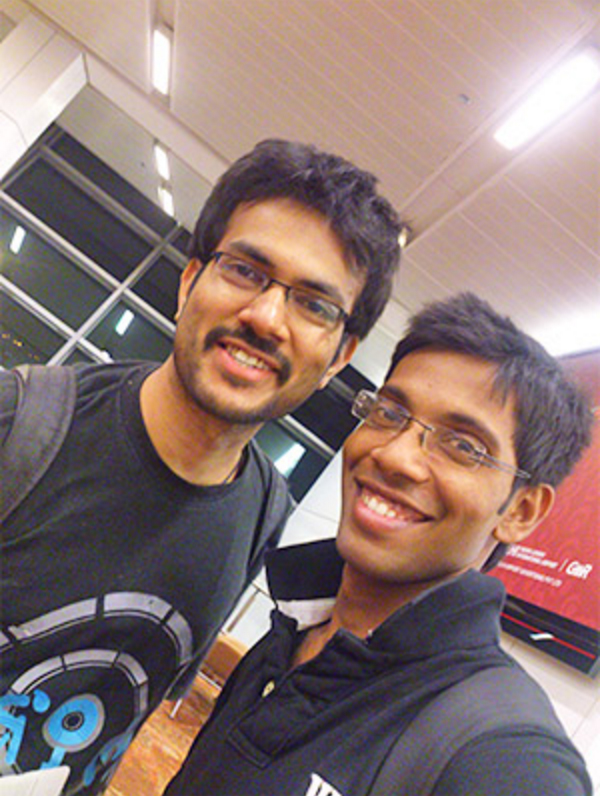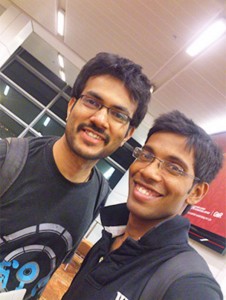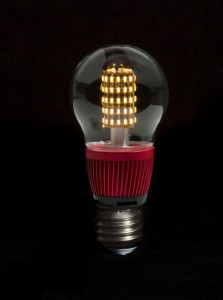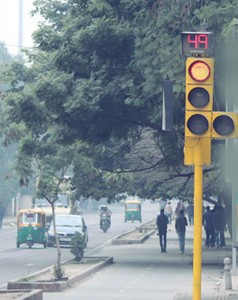
Li-fi tested successfully




Heard of Li-fi, a novel way of delivering data faster, by using the visible spectrum instead of radio waves, using a standard LED bluh, an internet connection and a photo detector, tested by Estonian start-up Velmenni in Tallinn.
Li-fi can deliver internet access 100 times faster than traditional wi-fi , exceeding speeds of 1Gbps (gigabit per second).
Velmenni used a LI-fi enabled light bulb to transmit data at speeds of 1 Gbps although laboratory tests have shown theoretical speeds of up to 224Gbps.
Infra-red transmit at speeds of 1000bps, while visible Li-fi can reach speeds of 1,000, 000, 000bps.
The term li-fi created by Prof Harald Haas from Edinburgh University in 2011, who described the future when billions of light bulbs could become wireless hotspots. On major factor in Li-fi will be to have uninterrupted data unlike wi-fi data which can be interrupted by other radio signals.
But Li-fi technology has drawbacks too, as it cannot be deployed outdoors in direct sunlight, because that would interfere with its signal. Also neither technology travel through walls, so it could be ideal in urban areas like hospitals.
Deepak Solanki and Saurabh Garg started Velmenni in January 2014. Initially, the duo designed different products (traffic light down-counters, vehicle tracking systems, home automation solutions.
“We created some demos of Li-Fi in which we sent data through a laptop screen to our hardware device. Then, we created a smart LED bulb (users can control it through a smartphone, change colors and intensity), and named it Jugnu,” says Deepak.
In July 2014, Deepak and Saurabh received an incubation offer and seed investment from an Estonian Hardware accelerator Buildit. “We’ve implemented our technology in one of the industries in Tallinn, Estonia. Now, we’re back in Delhi, and setting up development team. We’ll market this technology primarily in the European market,” adds Deepak.
The company has a few competitors like PureLifi, LVX System, Nakagawa Labs in Europe, the US and Japan, that are working on this technology. Velmenni will make money through licensing the technology to bigger LED manufacturers, and create customised applications for problems using VLC.
Li-Fi is a very complex technology. Only few research labs in Europe, Japan and the US have been successful in building this technology. “We’re the first Indian startup/research lab that has built working demos of this technology. Basically, in Li-Fi technology, we blink the LED light with very high speed in a complex pattern. The receivers detects these complex blinking patterns, and decode the data,” says Deepak.
The ambient light doesn’t affect the system, as receivers are only sensitive to one particular blinking pattern of LED light. Users can send HD videos, movies, audio or even access high-speed internet through this technology in future
Stephen McHenry says “Hackers dream is to access a system that is controlled by the touch of light . They can move through the crowd of devices effortlessly with this tech . I can imagine walking into a room where my smart phone,smart watch,laptop,tablet and PDA can be accessed by light hacker’s or “ghosts” faster then by wifi or Bluetooth signals.”
Before creating Li-Fi technology, Velmenni has solved one of the biggest traffic light issue in Delhi. “Two years ago, 50 per cent of traffic light down-counters were not working, and we got an opportunity to solve this problem. We’ve redesigned the hardware and also rewrote the software. Now it works pretty well in Delhi,” points Deepak.
Earlier, he worked with a robotics research laboratory at IIT, Hyderabad, and published a research paper in IEEE conferences. Saurabh is a Delhi University alumni, skilled at software development and algorithms.
Velmenni has implemented 2, 500 down-counters in Delhi and Srinagar with the help of Onnyx, which handles traffic lighting systems in Delhi and Jammu & Kashmir.
Li-Fi is a very complex technology. Only few research labs in Europe, Japan and the US have been successful in building this technology. “We’re the first Indian startup/research lab that has built working demos of this technology. Basically, in Li-Fi technology, we blink the LED light with very high speed in a complex pattern. The receivers detects these complex blinking patterns, and decode the data,” says Deepak.
The ambient light doesn’t affect the system, as receivers are only sensitive to one particular blinking pattern of LED light. Users can send HD videos, movies, audio or even access high-speed internet through this technology in future.
